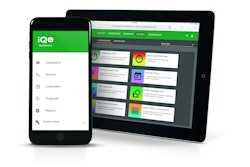 Photo: Pixabay
Photo: PixabayOne of the most crucial soft skills you need in any business, especially the landscaping business, is communication.
Without strong communication skills, you can fail to win new customers when you pitch projects, alienate employees when you’re trying to offer constructive criticism or cause misunderstandings when it comes to job site expectations.
Poor communication can lead to increased employee turnover, poor customer service, and failed project delivery. The list of possible mistakes and misinterpretations of meanings is endless when you cannot communicate properly.
Dave Molenda, the author of Growing on Purpose, says in his book that 85 percent of our success in business is based on how well we communicate.
Here are 10 of his tips on how to improve your communication skills.
1. Seek first to understand, then be understood
Oftentimes, this is the other way around where we want to be understood and make sure to get our point across, meanwhile ignoring what the other person has to say completely. This can result in you pretending you’re listening or only selectively hearing parts of the conversation.
Molenda says this is because most people listen with the intent to reply, not to understand. This is where you prepare in your mind what you are going to say before the other individual has finished talking.
By focusing on what the other person is saying, rather than what you want to say after they stop talking, you can avoid prematurely assuming what the person means.
2. Don’t just listen, observe
Molenda says communication is 7 percent actual words spoken, 38 percent tonality, and 55 percent body language. Tonality is how you sound when you speak.
A good example of how tonality works is emphasizing a different word in sentence and seeing how it changes the meaning.
For example, use the sentence, “I never said she stole my money.” If you emphasize the “I” it means that you specifically didn’t say she stole your money. If you emphasize “she” it says someone else might have stolen your money. Meanwhile, if you emphasize “my” it implies she may have stolen someone else’s money, just not yours.
Even if you’re not emphasizing one particular word, the vocal tone you choose to use can change how what you say is perceived. Likewise, pay attention to the tone of who you’re speaking to. Don’t just take what they say at face value.
Body language can also communicate how they really feel about a matter.
For instance, if the person you’re talking to is bored, they tend to look anywhere but at the person speaking. They may yawn or have a blank face as they do not have the energy to appear interested. Click here to view what other types of body language look like and what they mean.
3. Don’t let your mind wander
This relates to tip No. 1 in that you need to give whoever you are talking to your full attention. When you let your mind wander, you can miss important pieces of information and you’ll respond too soon. We speak at a rate of 125-250 words per minute, but the brain has the capacity to think anywhere from 1,000 to 3,000 words per minute.
While your brain may already be thinking about what you need to tell one of your field managers, focus on having one conversation at a time.
4. Check in along the way
If you’re wanting to make sure you understand what your client is saying, repeat what you heard to ensure accuracy. If this is not what the customer meant, they will hear your interpretation and clarify what they mean.
Also, try to take advantage of the Two-Question Rule when you can, as it can help both you and the other person learn more about each other. The Two-Question Rule is when someone asks you a question, you answer and follow up with the same or a related question. An example of this would be if a co-worker asks you ‘how was your weekend?’ you tell them and ask them how theirs was as well. This type of communication can help foster stronger interpersonal relations and makes sure conversations aren’t one-sided.
5. Look out for the other person’s needs
People’s communication styles vary and one way it can be broken down is with the DISC behavior types. The four styles are Dominance, Influence, Steadiness and Conscientiousness.
A dominant personality may speak quickly, focusing on the bottom line thinking they are respecting people’s time but in reality, they can come across as too aggressive and brash. A person with an influential personality is sociable and shares personal information but others can see this as being self-centered and unprofessional.
A steadiness personality is reserved and keeps their opinions to themselves in an effort to not be too forceful, but this can cause others to think they are not qualified or fully engaged at work. A conscientious personality provides lengthy analysis and information to help someone make an informed decision, but this can make the other person feel overwhelmed and unheard.
Click here to see tips on how to better communicate with people of these four personality types.
6. Keep an open mind
If you want to encourage open communication between your employees and with your customers, take care not to shut others down by judging or criticizing what they have to say.
The last thing you want is for a customer to be too afraid to tell you what they’d really like in their landscape design and then they are ultimately unsatisfied with the project. The same goes for employees. Encourage them to share their ideas and insights.
7. Offer advice, don’t give it
While offering advice is always done with good intentions, it can backfire as unsolicited advice can come across as condescending and patronizing. If a client or employee is discussing a problem with you, listen first, and then ask them if they would like your advice on the matter.
Once you have been given permission to add your advice, don’t “should” the person saying things like “this is what you should do…” or “this is how you should handle it…” as it can feel belittling. Instead, simply offer possible options of how to handle the problem, without telling them specifically what to do.
8. Always have a next step
If you’re having an important conversation with a customer or an employee, the last thing you want is for the purpose of the communication to be lost by the end. Avoid mutual mystification by making the next step clear.
After pitching a client, make sure to explain that they need to contact you and sign a contract to get the project underway rather than assuming they know what to do next. Without knowing what the next step is, they could keep wondering why you haven’t broken ground on their project when they gave you a verbal go ahead.
Molenda says 46 percent of people leave business meetings without clearly understanding what they are supposed to do next. Make a point that individual employees know what their next task is when you’ve taken the time to hold a meeting.
9. Don’t interrupt (or finish their sentences)
Molenda says men interrupt others more often than women, but regardless of who is doing it, it is seen as rude and signals that you are not being an active listener and do not know what the person was going to say. When you interrupt a person, it makes them feel they haven’t been heard and can cause them to shut down entirely.
There are many reasons people may think interrupting is okay. Sometimes it’s simply out of fear you’re going to forget what you wanted to say. Other times is a desire to show your expertise or a lack of self-awareness.
Some ways to break the habit of interrupting is to practice staying quiet and giving the speaker a little extra time when they pause instead of assuming, they’re done talking. If you’re worried about forgetting your thoughts, jot them down in a notebook while taking notes about what the person is saying.
If you do interrupt, apologize and let the person continue, and if you absolutely must interrupt, do it politely.
10. Stay positive
Positive communication is the ability to convey messages, even negative ones in a positive way. This can help create a happier workforce that is more productive and engaged.
In order to communicate positively, avoid negative words and look at the positive aspects. Rather than saying something cannot be done, offer alternatives and solutions.
With less negativity, employee morale is boosted and they are more inclined to work harder. Negative communication leads to discouragement, frustration and confusion.











